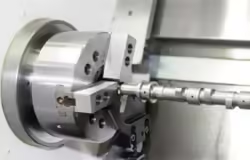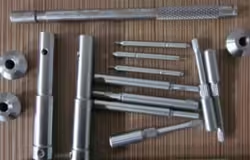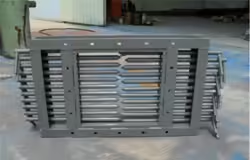
Why Choose Steel 1020 for Your Project?
Introduction
Steel 1020 is a versatile, low-carbon steel that is widely used across various industries. Known for its excellent machinability, weldability, and toughness, steel 1020 has become a popular choice for projects that require reliable and durable materials. In this blog, we will explore why steel 1020 is the best choice for your project, examining its properties, applications, and advantages over other types of steel.
What is Steel 1020 and Why is it Preferred?
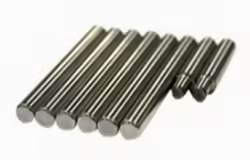
Composition and Properties of Steel 1020
Steel 1020 is a low-carbon steel with a carbon content of 0.18-0.23%. It also contains manganese (0.30-0.60%) and small amounts of phosphorus and sulfur. The low carbon content gives steel 1020 its excellent weldability and machinability, making it easy to work with in a variety of applications. Additionally, the presence of manganese improves its toughness and strength.
Steel 1020 is characterized by its good balance of strength, ductility, and hardness, making it suitable for both structural and mechanical applications. It can be easily shaped, welded, and machined, which is why it is often used in the manufacture of parts and components in industries such as automotive, construction, and machinery.
Applications of Steel 1020
The versatility of steel 1020 makes it suitable for a wide range of applications. It is commonly used in the manufacture of machinery parts, automotive components, and structural elements. Its excellent machinability allows it to be used in the production of gears, shafts, bolts, and axles, where precision and durability are essential.
In addition to mechanical applications, steel 1020 is also used in the construction industry for making pipes, fittings, and other structural elements. Its ability to withstand stress and strain without deforming makes it ideal for construction projects that require reliable and long-lasting materials.
Advantages of Choosing Steel 1020
Machinability and Workability
One of the key advantages of steel 1020 is its exceptional machinability. The low carbon content makes it easier to machine compared to higher carbon steels, allowing for precise shaping and forming. This property is particularly valuable in applications where intricate designs or detailed components are required.
Steel 1020’s workability extends to its weldability as well. It can be easily welded using conventional welding techniques, making it a preferred material for projects that require welding as part of the fabrication process. Whether you’re constructing a framework or assembling machinery, steel 1020 offers the flexibility and ease of use that many other materials cannot match.
Toughness and Durability
Steel 1020 is known for its toughness, which is the ability to absorb energy and resist impact without breaking. This makes it an ideal material for applications where parts are subjected to sudden forces or impacts. In addition to its toughness, steel 1020 also offers good durability, ensuring that components made from this material have a long service life.
The combination of toughness and durability makes steel 1020 a reliable choice for critical applications where failure is not an option. Whether used in automotive parts that endure constant motion or structural elements that support heavy loads, steel 1020 provides the strength and resilience needed to keep your project running smoothly.
Cost-Effectiveness
Another significant advantage of steel 1020 is its cost-effectiveness. As a low-carbon steel, it is less expensive than high-carbon or alloy steels, making it an economical choice for large-scale projects. Its affordability does not come at the expense of quality, as steel 1020 still offers excellent performance and reliability.
The cost-effectiveness of steel 1020 extends beyond its initial purchase price. Its ease of machining and welding reduces manufacturing costs, while its durability minimizes the need for frequent replacements or repairs. This makes steel 1020 an attractive option for projects that require high-quality materials on a budget.
Table: Comparative Analysis of Steel 1020 vs. Other Low-Carbon Steels
| Property | Steel 1020 | Steel 1018 | Steel 1045 | Steel 1008 |
|---|---|---|---|---|
| Carbon Content (%) | 0.18 – 0.23 | 0.14 – 0.20 | 0.42 – 0.50 | 0.08 – 0.10 |
| Machinability | Excellent | Excellent | Good | Very Good |
| Weldability | Excellent | Excellent | Fair | Excellent |
| Toughness | Very Good | Good | Good | Very Good |
| Hardness (HRC) | 40 – 50 | 35 – 45 | 55 – 60 | 25 – 35 |
| Cost | Low | Low | Medium | Low |
Steel 1020 in Comparison to Other Steels
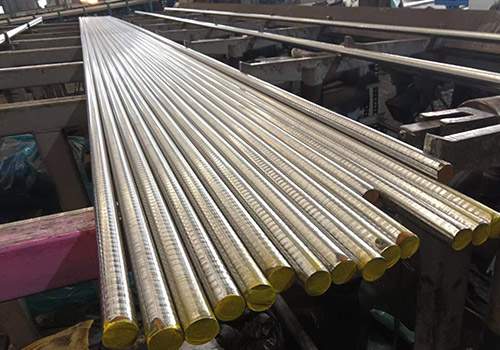
Steel 1020 vs. Steel 1018
Steel 1018 is another popular low-carbon steel, similar in many ways to steel 1020. Both are easy to machine and weld, making them suitable for similar applications. However, steel 1020 has a slightly higher carbon content, which gives it better strength and toughness compared to steel 1018. This makes steel 1020 a better choice for applications where additional strength is required, such as in the manufacture of mechanical components.
Steel 1020 vs. Steel 1045
Steel 1045 is a medium-carbon steel that offers higher hardness and strength compared to 1020 steel. While steel 1045 is often used in applications requiring high wear resistance, it is more challenging to machine and weld. 1020 steel, with its lower carbon content, offers a better balance of machinability and toughness, making it more suitable for applications where ease of fabrication is a priority.
Steel 1020 vs. Steel 1008
Steel 1008 is a low-carbon steel with a carbon content lower than that of 1020 steel. While both steels are highly weldable and machinable, 1020 steel provides better strength and toughness, making it a more robust choice for structural and mechanical applications. Steel 1008, on the other hand, is often used in applications where formability is more critical, such as in the production of thin sheets and wires.
Conclusion
Steel 1020 is a well-balanced material that offers excellent machinability, weldability, toughness, and durability. Its versatility makes it suitable for a wide range of applications, from machinery parts to structural components. Whether you are working on a small project or a large-scale construction, 1020 steel provides the reliability and performance needed to ensure success. With its cost-effectiveness and ease of use, 1020 steel remains a top choice for engineers, machinists, and builders alike.
FAQ
What is 1020 steel, and what are its primary properties?
1020 steel is a low-carbon steel known for its excellent machinability, weldability, and toughness. It has a carbon content of 0.18-0.23%, making it a versatile material for various applications.
What are the common applications of 1020 steel?
1020 steel is commonly used in the manufacture of machinery parts, automotive components, structural elements, gears, shafts, and bolts due to its strength and ease of fabrication.
How does 1020 steel compare to 1018 steel?
1020 steel has a slightly higher carbon content than 1018 steel, providing better strength and toughness. Both are easy to machine and weld, but 1020 steel is preferred for applications requiring additional strength.
Can 1020 steel be heat treated for enhanced performance?
Yes, 1020 steel can be heat treated to slightly improve its hardness and strength, but due to its low carbon content, the effects of heat treatment are less pronounced compared to higher carbon steels.
Is 1020 steel suitable for welding?
Yes, 1020 steel is highly weldable using conventional welding techniques, making it an excellent choice for projects that require welding as part of the fabrication process.
What are the benefits of using 1020 steel in construction?
1020 steel offers good strength, toughness, and durability, making it suitable for structural elements such as pipes, fittings, and support beams in construction projects.
How does the machinability of 1020 steel compare to other steels?
1020 steel is known for its excellent machinability, making it easier to machine than higher carbon steels. This property is particularly valuable in applications requiring precision machining.
What is the typical hardness of 1020 steel?
The typical hardness of 1020 steel ranges from 40 to 50 HRC (Rockwell Hardness), depending on the specific heat treatment and processing.
Is 1020 steel cost-effective for large-scale projects?
Yes, 1020 steel is cost-effective due to its low carbon content and affordability. Its ease of machining and welding also reduces manufacturing costs, making it an economical choice for large projects.
What are the limitations of using 1020 steel?
While 1020 steel offers good overall properties, it may not be suitable for applications requiring very high wear resistance, hardness, or corrosion resistance. In such cases, higher carbon or alloy steels might be more appropriate.



